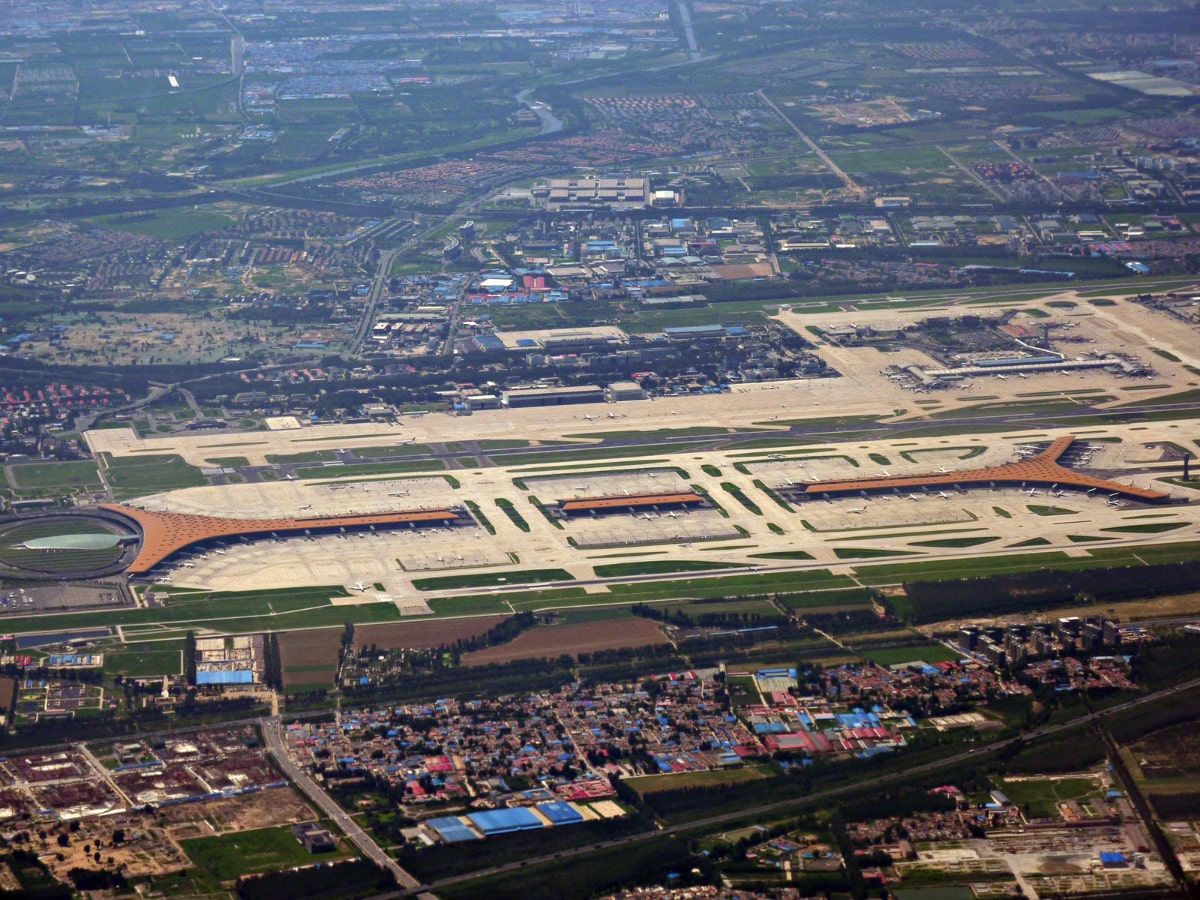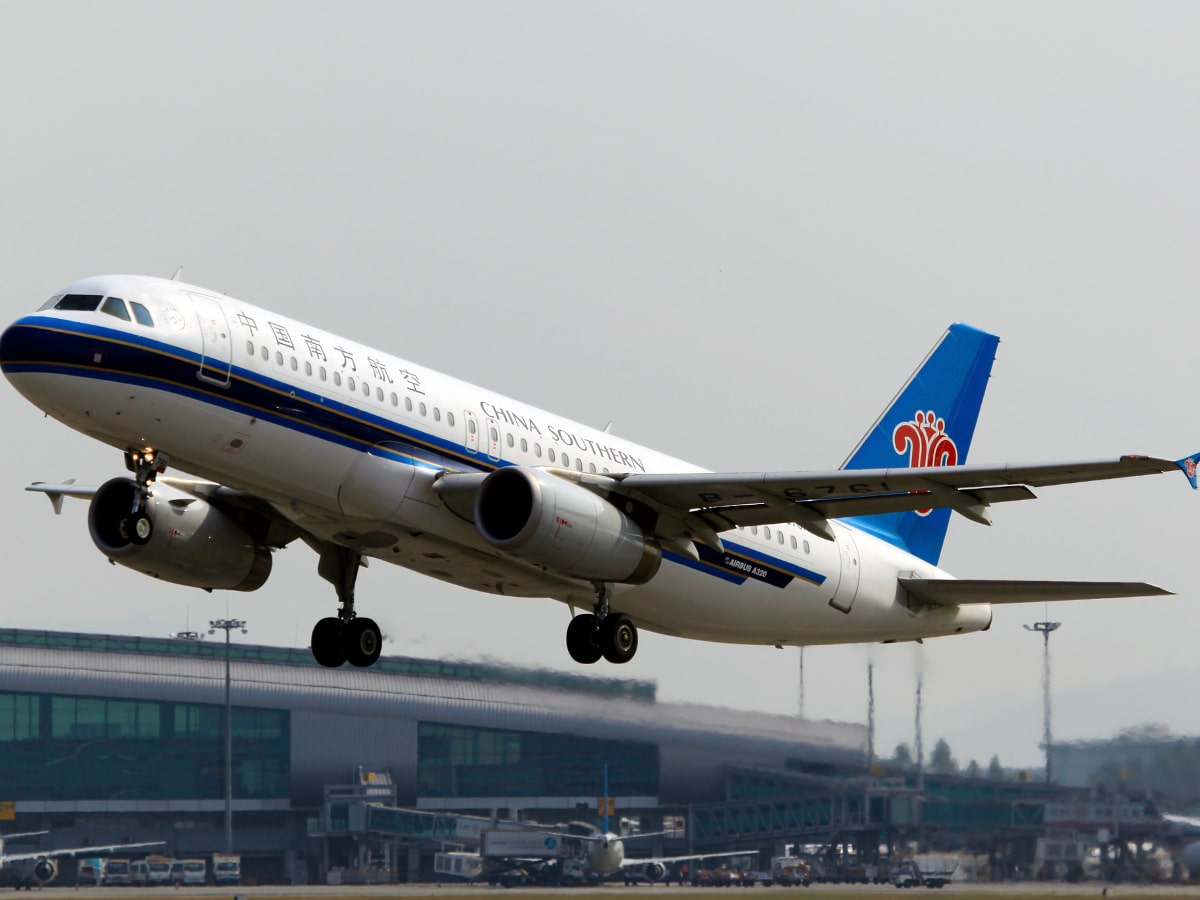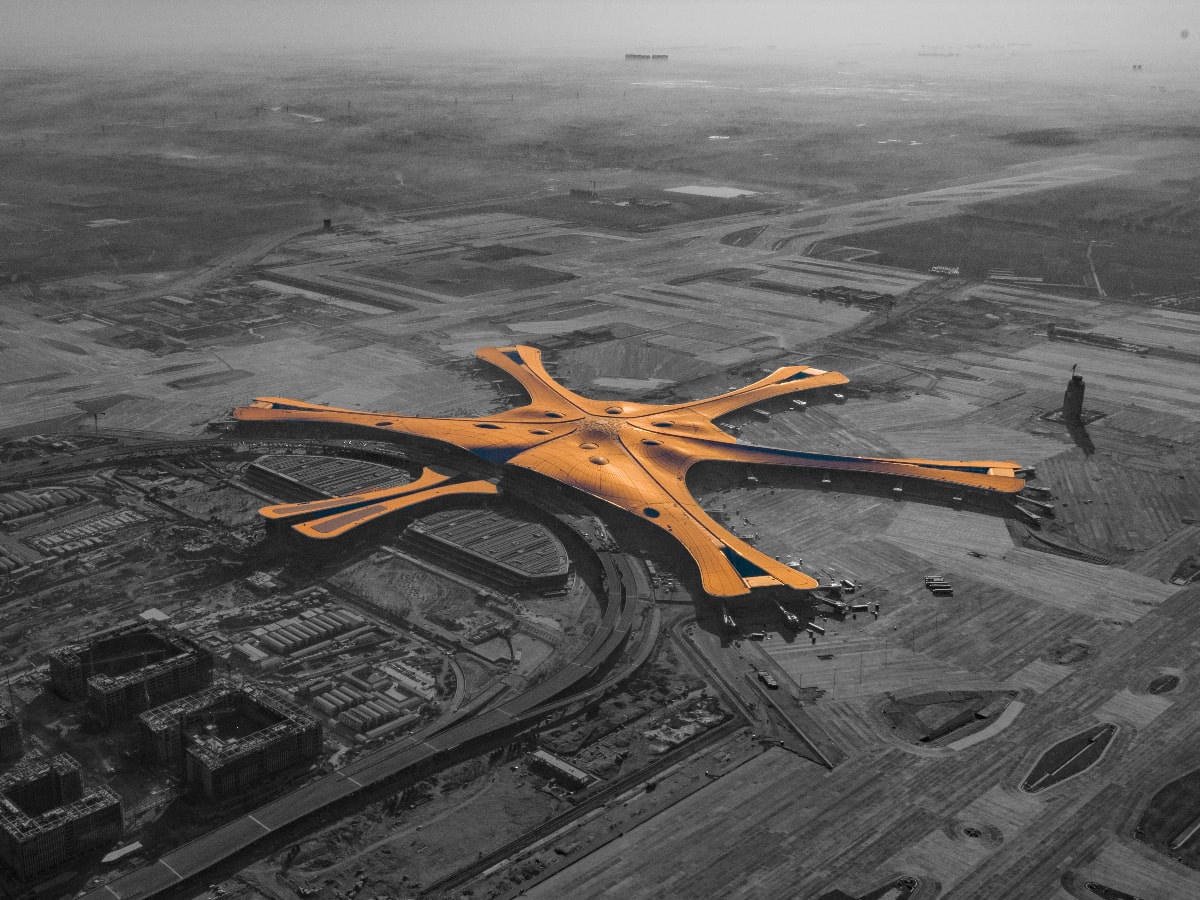In this post, we’re going to to look at the busiest airports in China with demand for air travel, both domestic and international, having boomed in the country in recent years. China is busy building new airports or expanding and modernising existing ones too with the trend expected to continue once we finally move on from the Covid-19 pandemic.
Table of Contents
- The Busiest Airports in China by Passenger Numbers (Mainland Only)
- The Next Generation – New Chinese Airports
For this article, we have used data from 2019, the last year before the pandemic, to rank the airports below. Figures are rounded up or down to the nearest 100,000 in all circumstances. Passenger numbers relates to the annual total including both domestic and international travel and is according to CAAC statistics.
While most China budget travel tips recommend you to skip the plane and take the train, flying is an increasingly popular way to get around the country with domestic travel accounting for a large proportion of the country’s air traffic.
The Busiest Airports in China by Passenger Numbers (Mainland Only)
- Beijing Capital International Airport

Beijing Capital International Airport was China’s busiest airport in every year of the 2010’s with passenger numbers reaching 100 million per year by the end of the decade. That made it the busiest airport in Asia, pipping the UAE’s Dubai International into second place.
The airport opened way back in 1958 with one small terminal building which still stands to this day and remains in use for VIP’s and special charter flights. It wasn’t really until the early 2000’s that Beijing Capital started to grow into a major global airport though with China’s rising economic power and the Beijing Olympics in 2008 factors in the growth of the airport, both in terms of its size and usage with passenger figures quadrupling inside the last 20 years. It is also one of the world’s busiest airports for cargo.
In recent years, Beijing Capital has been stretched to capacity though and those problems have been eased, both by the pandemic and opening of the brand new Beijing Daxing Airport (more on that at the bottom!)
Number of Passengers in 2019: 100.0 million
- Shanghai Pudong International Airport
Along with Beijing Capital, Shanghai Pudong has been the other major international airport in China over the past ten years. It connects the booming Chinese city to major financial hubs and just about important major city across the planet and is the main gateway into mainland China from abroad with more international travellers than Capital Airport.
It also ranks as the 3rd busiest airport globally by cargo traffic behind Memphis and Hong Kong as of 2020 and serves as a major hub for the likes of Air China, China Eastern Airlines, China Southern Airlines and Shanghai Airlines. International passengers arriving into Shanghai get an immediate taste of high-tech modern-day China with the Maglev train, the world’s fastest rail service, transporting new arrivals into the centre of Shanghai in just eight minutes at a breathtaking speed of 430 km per hour.
Number of Passengers in 2019: 76.2 million
- Guangzhou Baiyun International Airport

The Chinese air industry didn’t take as big a hit as a result of the Covid-19 pandemic as was the case in most countries around the world and Guangzhou was actually the busiest airport in the world in 2020 with 43.8 million passengers passing through. That was still a decline on 2019 figures but nowhere near as severe a drop as those in Beijing or Shanghai which have more of the international routes which were worse affected as China effectively closed its borders as a response to Covid-19.
Baiyun Airport serves the major Southern Chinese city of Guangzhou which is home to a population of almost 20 million and there are plenty more in the vast metropolitan area which includes the neighbouring cities of Foshan, Dongguan, Zhongshan and Shenzhen.
The new Guangzhou Baiyun International Airport replaced its predecessor (of the same name) in 2004. Flight and passenger numbers have shot up since, in part thanks to the removal of a night-time curfew which has helped the airport attract more inter-continental flights to cities such as London, Moscow, San Francisco and Sydney.
Number of Passengers in 2019: 73.4 million
- Chengdu Shuangliu International Airport
Chengdu is the main air hub in Western China and Shuangliu International Airport ranked amongst the top 25 by passenger numbers in 2019 with just over 55 million. Opened in 1938, Shuangliu initially served as a military airfield during the second Sino-Japanese War and was even used as a base for US Army Air Forces in World War II.
It soon transformed into a more conventional airport for domestic and eventually international flights with connections to cities on five different continents by the 2010’s. However Shuangliu’s days as a major international airport appear to be nearing the end following the 2021 opening of a new airport in Chengdu which looks set to take over most of the international routes.
Number of Passengers in 2019: 55.9 million
- Shenzhen Bao’an International Airport

Returning to South China, Shenzhen Bao’an International Airport is located only 100 km or so south of Guangzhou Baiyun and just 50 km from Hong Kong International, with direct ferry services connecting the two airports allowing passengers to transit to another flight without going through customs or immigration. It is the third busiest airport in the Pearl River Delta behind those two but still serves more than 50 million passengers per year during normal times.
It’s quite a modern airport having only opened in 1991 but has recently undergone extensive redevelopment and expansion with some of the old terminal buildings closed and replaced by a brand new structure in 2013. There was also a new runway which opened in 2011 and greatly increased Shenzhen’s ability to compete with its neighbouring cities for long-haul routes.
Number of Passengers in 2019: 52.9 million
The top 10 busiest airports in China in 2019 were rounded off by Kunming Changshui (48.1 million), Xi’an Xianyang (47.2 million), Shanghai Hongqiao (45.6 million), Chongqing Jiangbei (44.8 million) and Hangzhou Xiaoshan (40.1 million).
It’s also worth noting that Hong Kong International Airport served 71.4 million passengers in 2019 and would have ranked 4th if included.
China Airports Map
The Next Generation – New Chinese Airports
The growth in air travel in China and rapid development of new airports in the first two decades of the 21st Century has been pretty extraordinary with an average of around seven new airports per year during the 2010’s.
There is no sign of them slowing up either. In the last couple of years alone, a number of major new international airports have opened and plans are in place for plenty more.
Beijing Daxing International Airport
Daxing Airport opened midway through 2019, too late to make much impact on the figures above but that should change in the upcoming years. It is located some 65 km south of Beijing Capital Airport and will serve the cities of Tianjin and Hebei, as well as Beijing.
It’s an extraordinary structure, the world’s largest single-building airport terminal in the middle of a huge plot of land that is expected to see Daxing cater for up to 72 million passengers per year in the none too distant future. Some major airlines including China Southern Airlines have already transferred all their Beijing flights to the airport.

Chengdu Tianfu International Airport
The number of international airports in China is growing all the time and 2021 saw two major new additions. The first was Chengdu Tianfu which will operate alongside the existing Chengdu Shuangliu Airport. It took just five years to build and opened with three runways and two terminals giving it the potential to cater for 60 million passengers per year by 2025.
The long-term vision is to turn Chengdu into one of the largest air hubs in the world with plans in place for Tianfu to ultimately have four terminals and six runways and a potential capacity of 90 million passengers per year.
Qingdao Jiaodong International Airport
Just a couple of months after the first flights left Tianfu, Qingdao Jiaodong International Airport opened. It is the largest airport in Shandong Province, China’s 2nd most populous region with a population of over 100 million.
Qingdao Jiaodong has a slightly smaller capacity than the other major new additions and won’t serve as many long-haul flights but will still be an important regional hub with flights to and from cities all around China and across East Asia. It’s a major hub for Shandong Airlines and China Eastern Airlines.
Future International Airports in China
Despite the severe impact of the pandemic on air travel, climate concerns and worries about the economic sustainability of China’s relentless construction projects, more than 100 new airports could be built by 2035.
Following the recent opening of Chengdu Tianfu and Beijing Daxing, the short-term goals seem to focus more around improving existing airports, but there are still some big projects in the pipeline. The most ambitious project is currently underway in Liaoning Province where Dalian Jinzhouwan International Airport is being built on land entirely reclaimed from the sea. It is expected to open in 2024 or 2025 and will become the world’s largest offshore airport with a capacity of 70 million passengers per year when complete.
There are also plans in place to start construction of a new airport in the Southeastern city of Nantong in 2023. This would effectively be a third airport serving nearby Shanghai and should help further ease the burden on the existing Pudong and Hongqiao airports.
This post on the busiest airports in China was published in February 2022.

